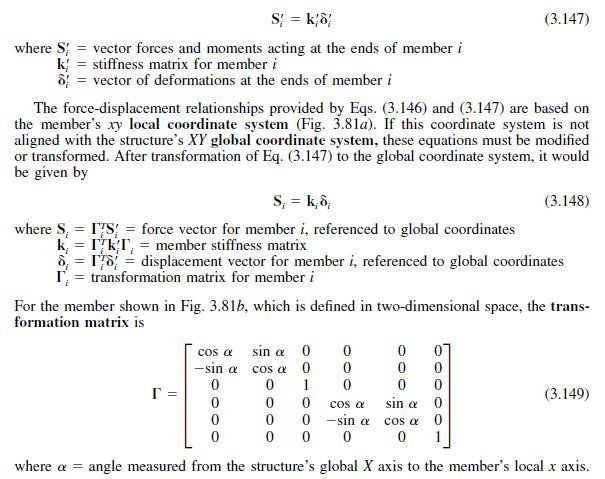


Two types of coordinate systems are used in the generation of the required matrices and are referred to as local and global systems.If the member is defined as truss member (i.e., carrying only axial forces) then only the three degrees (translational) of freedom are considered at each node. If torsional or bending properties are defined for any member, six degrees of freedom are considered at each node (i.e., three translational and three rotational) in the generation of relevant matrices. Internal and external loads acting on each node are in equilibrium.These plate and solid elements are referred to as "elements" in the manual. A solid element is a four-to-eight- noded, three dimensional element. A plate element is a three or four noded planar element having variable thickness.From this point these beam members are referred to as "members" in the manual. They may also be subjected to shear and bending in two arbitrary perpendicular planes, and they may also be subjected to torsion. A beam member is a longitudinal structural member having a constant, doubly symmetric or near-doubly symmetric cross section along its length.These loads may be both forces and moments which may act in any specified direction.

The assemblage is loaded and reacted by concentrated loads acting at the nodes. The structure is idealized into an assembly of beam, plate and solid type elements joined together at their vertices (nodes).For a complete analysis of the structure, the necessary matrices are generated on the basis of the following assumptions:


 0 kommentar(er)
0 kommentar(er)
